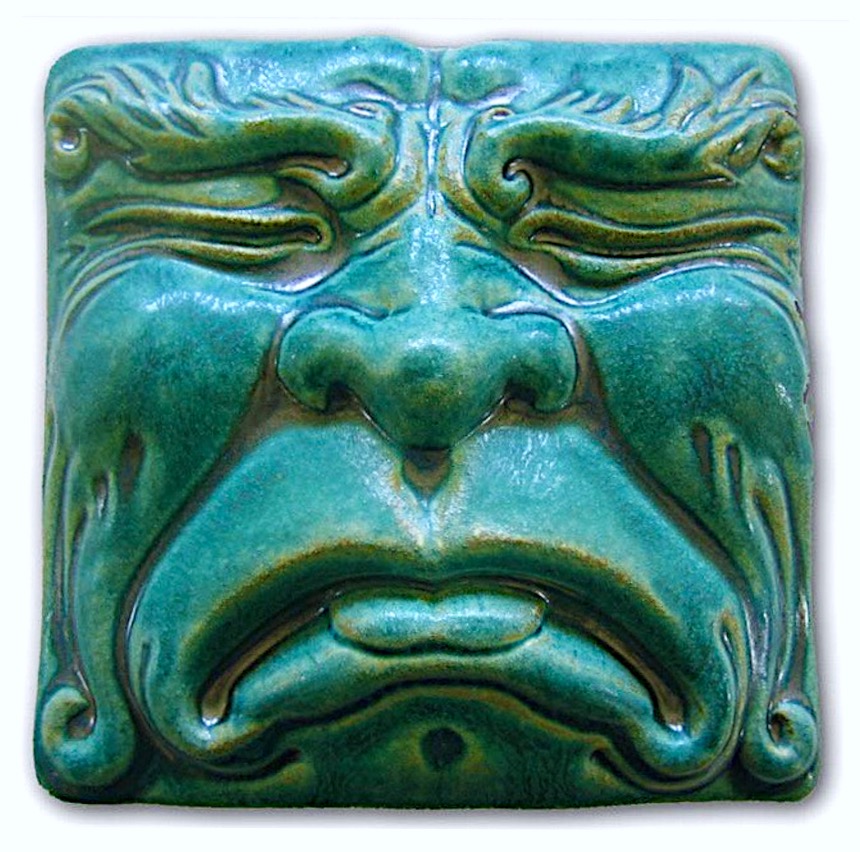

Title: Distorted Relief Face Antique Gothic Ceramic Tile Sculpture
Shipping: $29.00
Artist: N/A
Period: 19th Century
History: Art
Origin: North America > United States
Condition: Very Good
Item Date: N/A
Item ID: 423
A Wonderful Designer Antique Gothic Ceramic Tile Sculpture, of a distorted face. Very rare design of an American Ceramic Tile. Designed in the arts and crafts Majolica Azulejos style. Majolica azulejos, also known as tin-glazed tiles, are a type of ceramic tile that has been glazed with a glossy, white tin-based glaze and then decorated with colorful patterns and designs. They have a long history dating back to ancient Rome and have been used in a variety of settings, including as floor tiles, wall tiles, and even as decorative objects. The earliest known examples of majolica azulejos date back to the 1st century AD and were found in the ruins of ancient Roman villas. These tiles were made from a mixture of clay and crushed marble, and were glazed with a white tin-based glaze. They were used as floor tiles in the villas and were often decorated with geometric patterns and scenes from daily life. During the medieval period, majolica azulejos were also used in Islamic architecture in Spain and the Middle East. These tiles were often adorned with intricate geometric patterns and calligraphic inscriptions. The most well-known example of majolica azulejos is the Hispano-Moresque style, which was developed in Spain in the 14th and 15th centuries. This style is characterized by its use of bright colors and intricate patterns, often featuring floral and animal motifs. In the 16th and 17th centuries, majolica azulejos became popular in Italy, where they were used in churches, palaces, and other public buildings. They were also used in the decoration of private homes, and were often used to depict historical events or religious scenes. Today, majolica azulejos can be found in a variety of settings, including as decorative objects, wall tiles, and floor tiles. They are still made using traditional techniques and are highly prized for their beauty and historical significance.
The first known examples of ceramic tiles date back to ancient civilizations such as ancient Egypt, Mesopotamia, and China. These tiles were made from clay and were often glazed with a shiny, glass-like coating. They were used as floor tiles in homes and public buildings and were also used to decorate walls and other surfaces. The process of making ceramic tiles has remained largely unchanged over the centuries. Clay is mixed with water to create a malleable substance that can be shaped into tiles. The tiles are then dried and fired in a kiln to harden them. After firing, the tiles can be glazed with a variety of materials to give them a glossy finish and to add color. Antique tiles, or tiles that are considered to be old or vintage, can be made from a variety of materials, including clay, marble, and stone. They can also be glazed with a variety of materials, including tin, lead, and copper. Antique tiles are often highly prized for their historical value and their unique design and can be found in a variety of settings, including as floor tiles, wall tiles, and decorative objects.